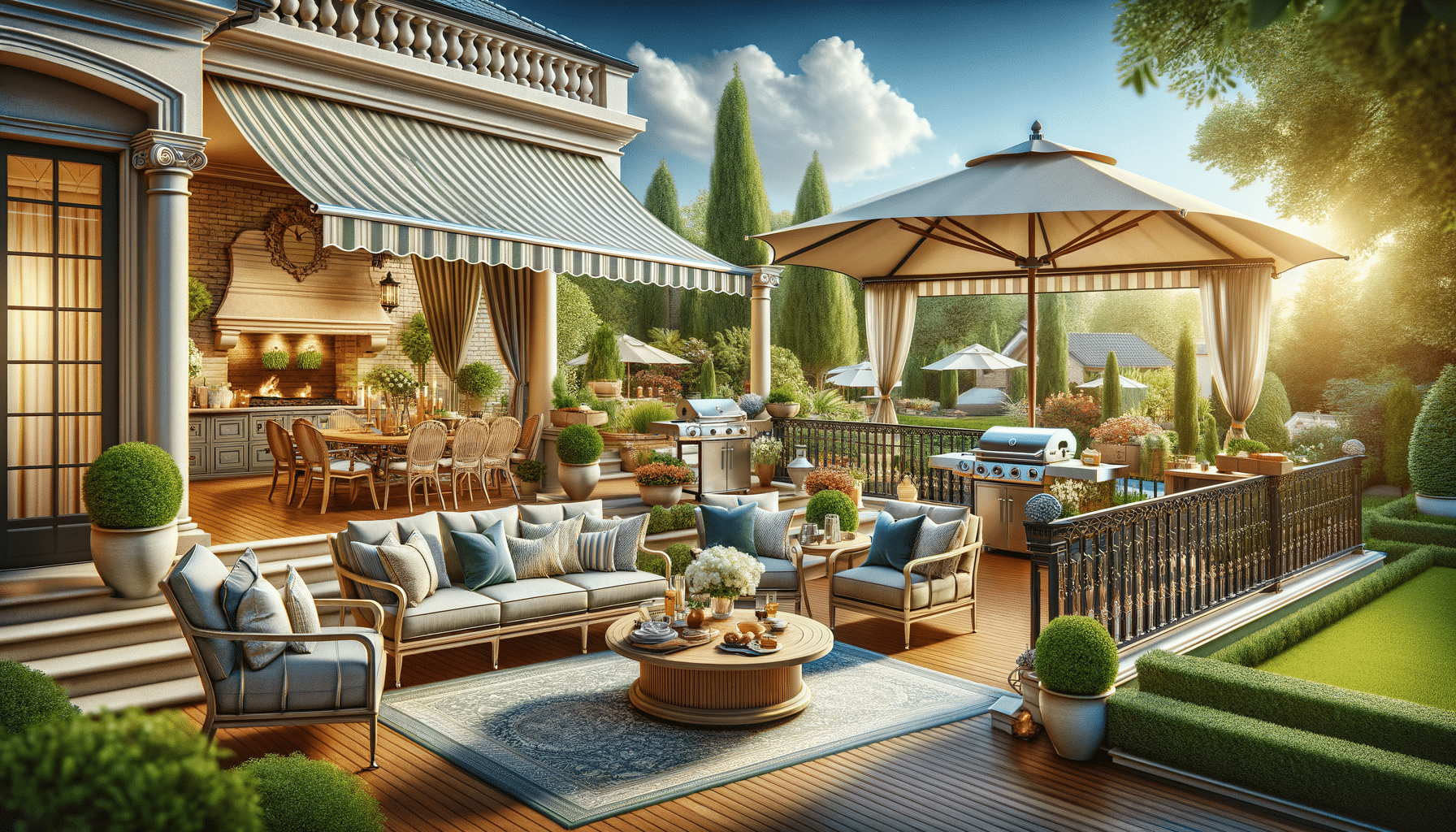
Optimizing Your Outdoor Spaces with Awnings: A Stylish Approach
Understanding the Different Types of Awnings
Awnings come in various designs, each catering to different needs and preferences. The most common types include retractable awnings, stationary awnings, and motorized awnings. Retractable awnings are highly popular for their flexibility, allowing users to extend or retract the fabric as needed, providing shade when required and retracting for sunlight. Stationary awnings, on the other hand, offer a permanent solution, ideal for areas that need constant shade or protection from the elements. Motorized awnings add a touch of modern convenience, operated with a simple switch or remote control, making them an excellent choice for those who value ease of use.
Choosing the right type depends on several factors:
- Space: Consider the area you want to cover and how much flexibility you need.
- Budget: Retractable and motorized options typically cost more than stationary ones.
- Maintenance: Retractable and motorized awnings might require more maintenance due to their moving parts.
Understanding these types and their unique benefits can help in selecting an awning that best suits your outdoor space, ensuring both functionality and aesthetic appeal.
The Benefits of Installing Awnings
Awnings offer a multitude of advantages that go beyond mere decoration. Firstly, they provide excellent sun protection, significantly reducing UV exposure and protecting outdoor furniture from fading. This is particularly beneficial for families with children, as it creates a safer environment for outdoor play. Additionally, awnings contribute to energy efficiency by blocking sunlight from entering the home, which can help reduce cooling costs during hot summer months.
Moreover, awnings enhance outdoor living spaces by creating a comfortable and inviting area that can be enjoyed regardless of weather conditions. They also add a layer of privacy, which is especially valuable in densely populated neighborhoods. The aesthetic value of awnings cannot be overlooked; they come in various colors and styles, allowing homeowners to personalize their outdoor areas to reflect their personal taste.
In summary, the benefits of awnings are manifold, impacting comfort, energy efficiency, and aesthetic appeal, making them a valuable addition to any home.
Material Choices for Awnings: Durability and Style
The choice of material for an awning is crucial as it affects both durability and style. Common materials include canvas, acrylic, and polyester. Canvas is a traditional choice known for its classic look, but it requires regular maintenance to prevent mold and mildew. Acrylic fabrics are popular for their resistance to fading and mildew, making them a durable option that maintains its appearance over time. Polyester is another option, often treated with a protective coating to enhance its resistance to weather elements.
When selecting a material, consider the following:
- Climate: If you live in a humid area, mildew-resistant materials like acrylic are advisable.
- Maintenance: Some materials require more upkeep than others, so consider your willingness to maintain the awning.
- Style: Choose a material that complements your home’s exterior and personal style.
Each material offers distinct advantages, so weighing these factors will help ensure that your awning not only looks great but also stands the test of time.
Installation Considerations for Awnings
Installing an awning involves several considerations to ensure it serves its purpose effectively. It’s essential to assess the structural integrity of the installation site, as awnings can be heavy and require secure anchoring. Professional installation is often recommended to ensure safety and longevity, especially for retractable and motorized awnings, which involve more complex mechanisms.
Additionally, consider the angle of installation, as this affects the amount of shade provided. A steeper angle is beneficial for areas with high sun exposure, while a gentler slope might suffice in less sunny locations. It’s also important to check local regulations and homeowners’ association rules, as some areas have restrictions on awning installations.
By taking these factors into account, you can ensure that your awning is installed correctly and safely, providing years of enjoyment and comfort.
Creative Uses of Awnings in Outdoor Spaces
Awnings are not just for patios; they can be creatively used in various outdoor settings. For instance, they can be installed over windows to reduce indoor heat and glare, enhancing the energy efficiency of your home. In commercial settings, awnings can serve as an attractive signage option, drawing attention to storefronts while providing shade for customers.
In gardens, awnings can create cozy nooks, perfect for reading or enjoying a cup of coffee. They can also be used to shelter outdoor kitchens or dining areas, making alfresco dining possible even in less-than-ideal weather. Additionally, awnings can be part of a larger outdoor redesign, complementing other features like decks, pergolas, or outdoor lighting to create a cohesive and inviting space.
Exploring these creative uses can maximize the functionality and enjoyment of outdoor areas, making awnings a versatile addition to any property.

